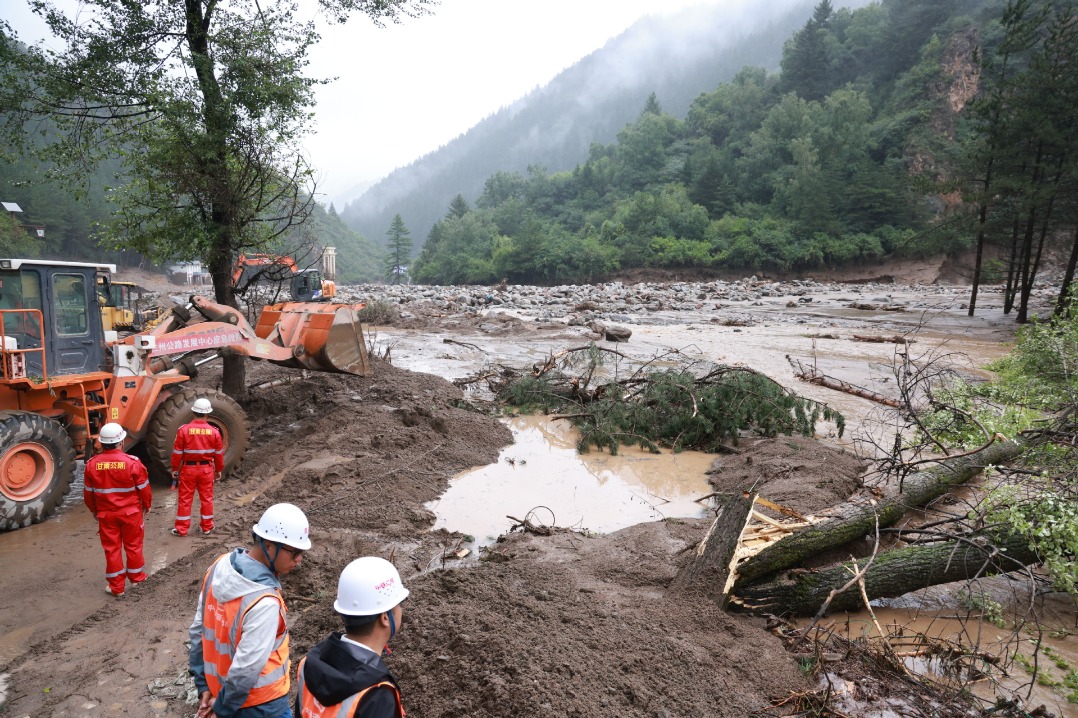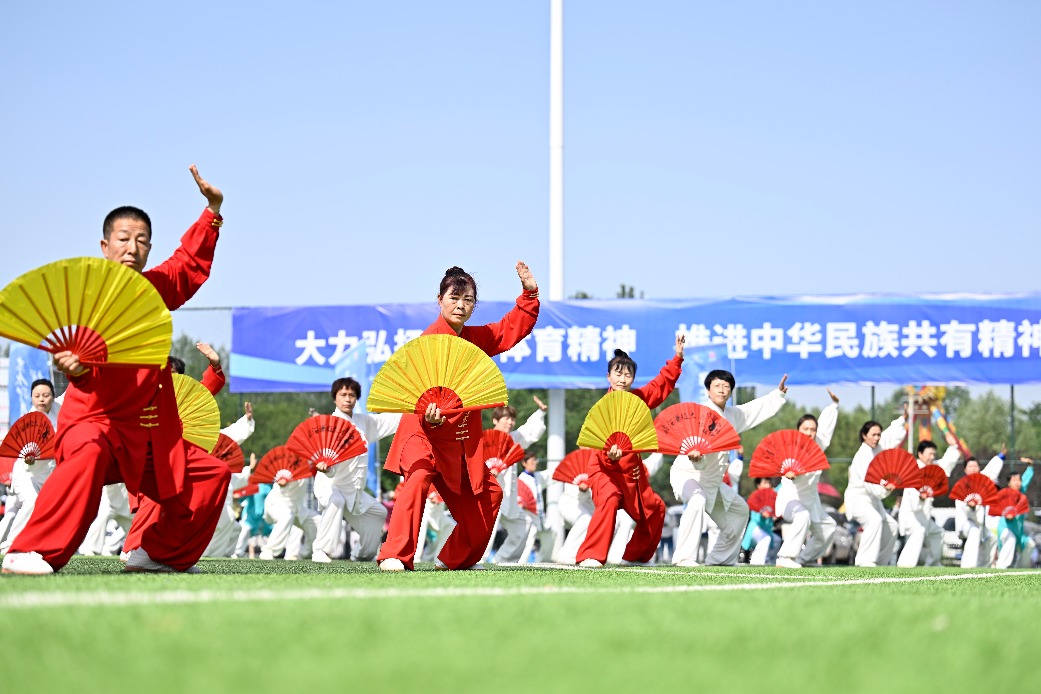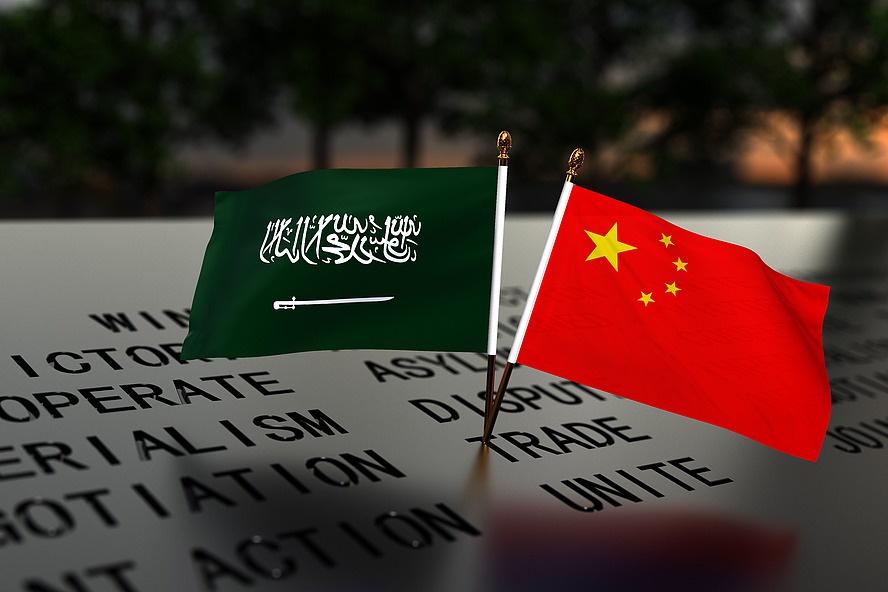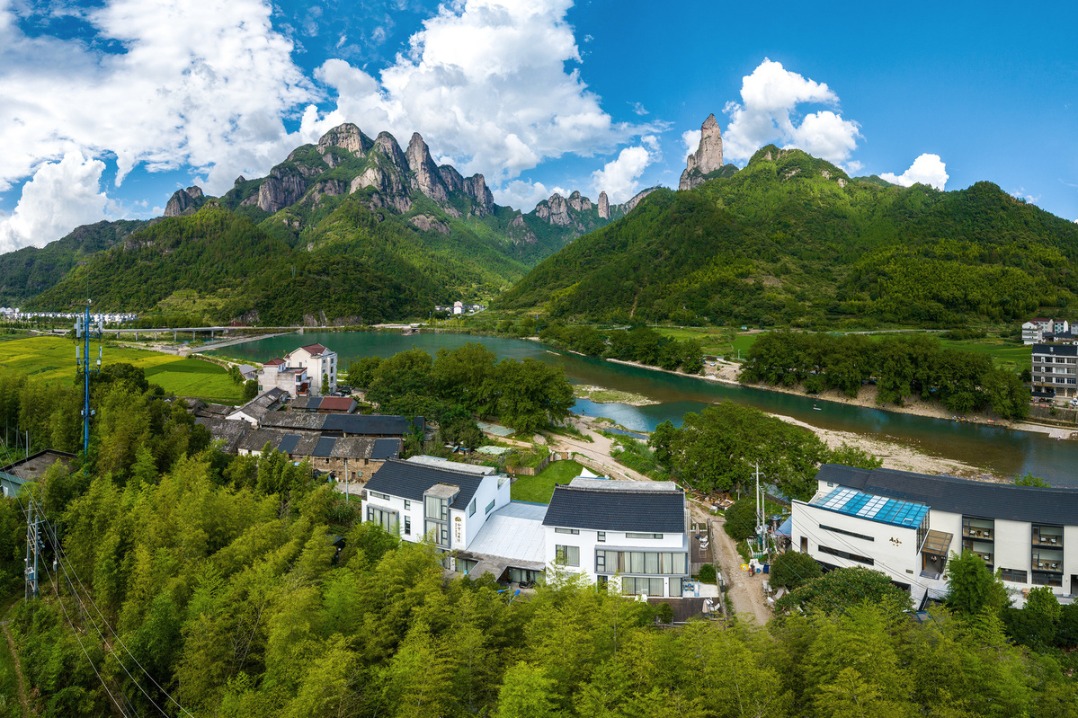Three-dimensional transformation
Integration of primary, secondary and tertiary industries foundation for modernizing agriculture and vitalizing rural areas


The integration of the primary, secondary and tertiary industries in rural areas is an important way to promote the transformation and upgrading of agriculture, enable the flourishing of the rural economy and increase the incomes of farmers.
The essence of the integrated development of the three industries is to solve the problem of the unreasonably low added value of the agricultural sector and further extend the sector's industrial and value chains. Currently the integration of industries in rural areas is mainly conducted through the extension of industrial chains, the integration of agriculture with other industries and the application of advanced technologies.
Extending the industrial chains of the agriculture sector requires the development of both the processing industries for agricultural produce and sales services. The integration of agriculture with other industries mainly involves the development of agriculture with tourism. Pingdu in Shandong province is a prime example in this regard. The application of advanced technologies includes the integration of agriculture empowered by leading technology and certain types of services.
But there are still some problems in relation to the integration of the primary, secondary and tertiary industries in rural areas.
First, there is still room to improve the level of integration and the integrated industrial chains are short with the added value remaining at a low level.
Second, despite the large number, the processing companies are generally small-scale with low technological competitiveness. There is also a shortage of professionals, especially those with expertise in the development of multiple sectors.
Third, the development of agricultural tourism projects requires large tracts of land, so they are constrained by the limited land supply.
Fourth, effective investment in agriculture and rural areas is relatively insufficient, and the construction of rural infrastructure still lags behind that in urban areas. There are weak links in the supply of rural public services, and the expansion and penetration of social capital, as well as leading and mature technology production factors, into agriculture and rural areas are slow.
A few measures can be taken to further strengthen the integrated development of industries in rural areas and promote the modernization of agricultural and rural areas.
First, the role of brands in guiding the development of industries should be enhanced. Local governments and enterprises need to further explore the distinctive historical connotations and traditional culture of local areas to create recognizable brands to further increase their market influence. For example, our research on poverty alleviation in Sichuan province found the provincial government was making efforts to promote the geographical indication of Daliangshan-a local mountain range-as a brand identifier for agricultural products with local characteristics. The establishment of a unified Daliangshan agricultural products identity for use in the packaging, labeling and advertising of local agricultural products has bolstered the cultivation of local agricultural produce brands. Through various activities and exchanges, the market competitiveness and influence of high-quality brands can be enhanced.
Second, it is important to step up the cultivation of industrial leaders, which are not only the pillar that drives the growth of farmers' incomes, but also the backbone of efforts to effectively promote the transformation of the agricultural development model and drive improvements in the quality, efficiency and competitiveness of the agricultural industrial chains. For example, the government of Zhangjiakou in Hebei province prioritized support to 32 leading enterprises to enhance their capacity to pursue their own development and help with poverty alleviation. As of November 2018, the 32 enterprises had contributed directly to the increased income of 28,694 impoverished individuals from 14,142 poor households, who were distributed across 301 villages, including 81 on the poverty-stricken list.
In terms of policy and financial support and optimizing the allocation of resources, steps should be taken to increase the support to leading enterprises, allowing them to grow bigger and stronger, and give full play to their role in accelerating the transformation of the agricultural development model and lead the integrated development of rural industries.
Third, the establishment of national pilot zones for urban-rural integrated development will drive the overall development of agriculture and the vitalization of rural areas. The National Development and Reform Commission recently issued a plan for the establishment of national urban-rural integrated development pilot zones, which gave the green light to the establishment of 11 pilot zones.
The plan is intended to move forward the rural vitalization strategy and new urbanization strategy through preferential policies and special funds to support the integrated development of urban and rural areas across the country.
Urban-rural integration involves multiple administrations including those for agriculture, industry, information technology, commerce, reform, natural resources, public security, land use and household registration, as well as authorities at district and sub-district levels. It also requires effective and across-the-board coordination.
The author is an assistant professor of the Agricultural Information Institute at the Chinese Academy of Agricultural Sciences. The author contributed this article to China Watch, a think tank powered by China Daily. The views do not necessarily reflect those of China Daily.


































